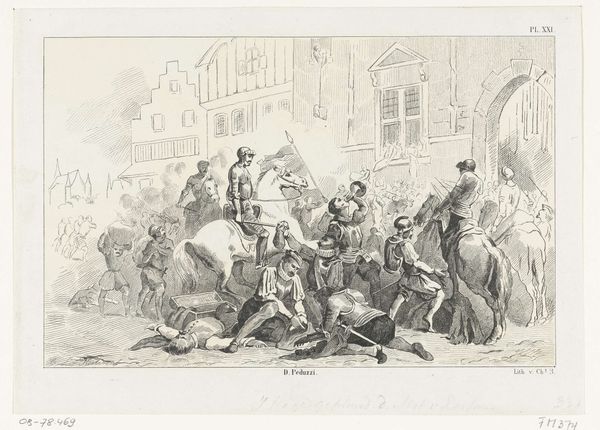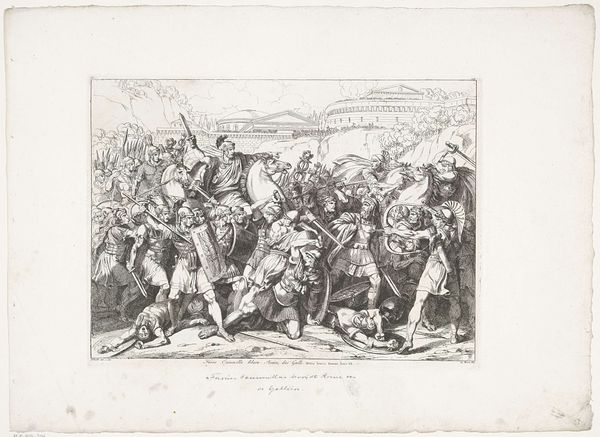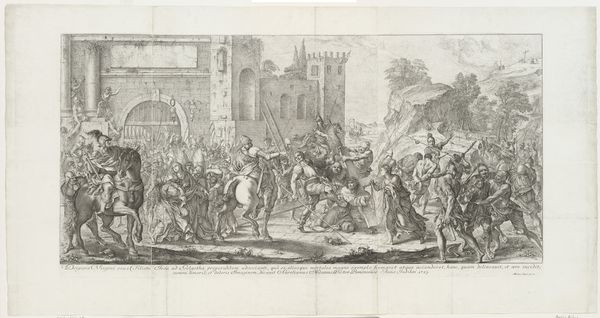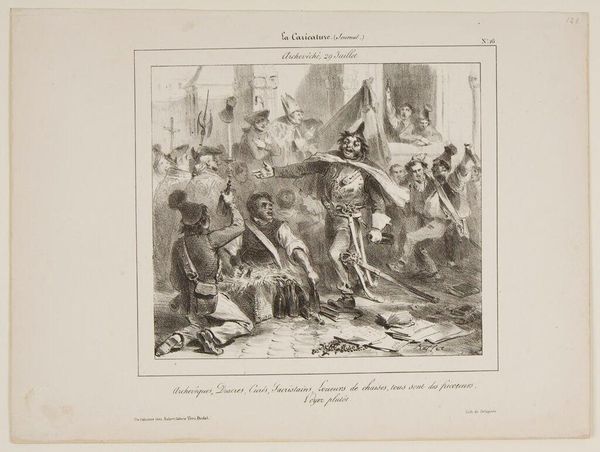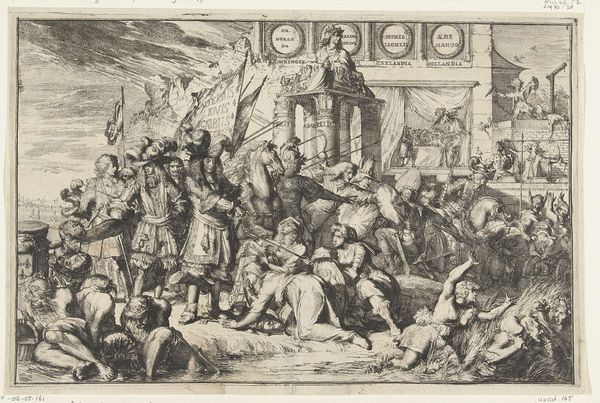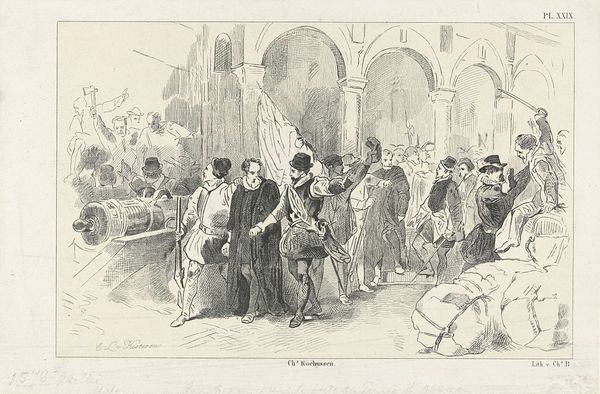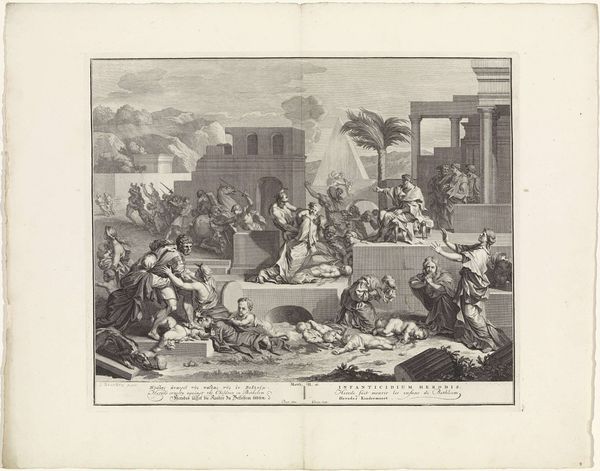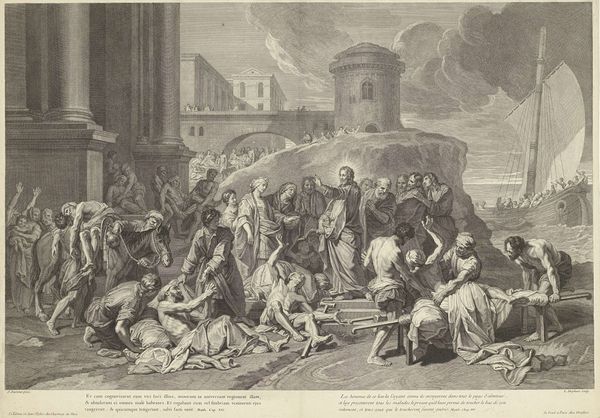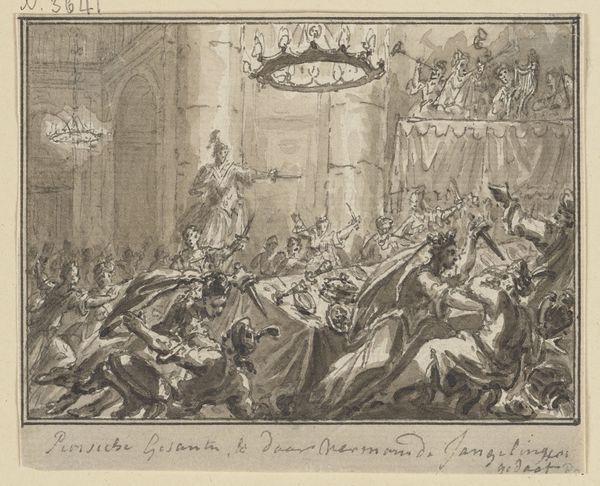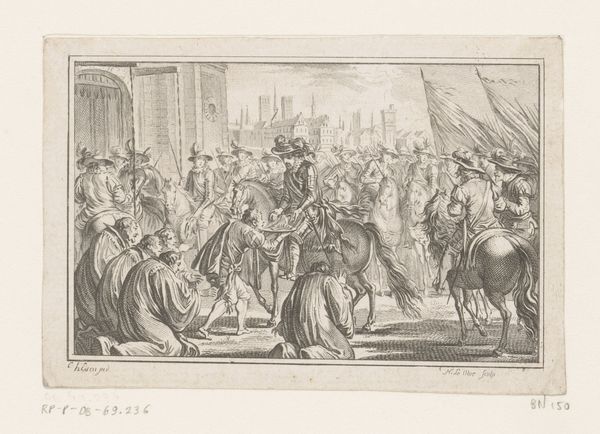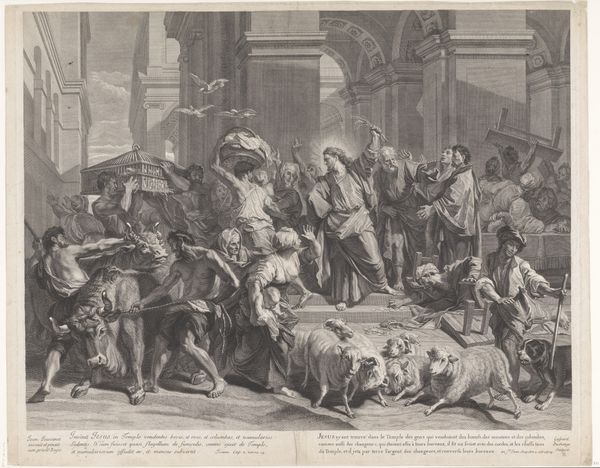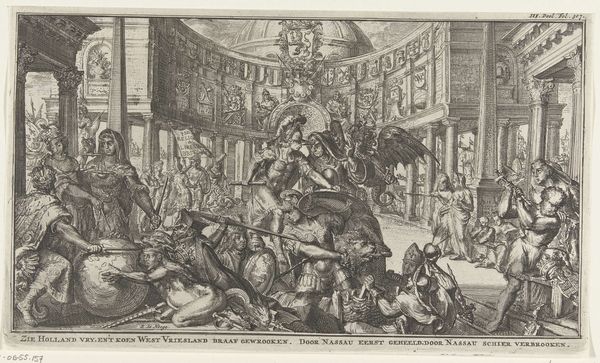
drawing, lithograph, print, paper
#
drawing
#
narrative-art
#
lithograph
# print
#
figuration
#
paper
#
romanticism
#
france
#
cityscape
#
history-painting
Dimensions: 208 × 303 mm (image); 303 × 413 mm (sheet)
Copyright: Public Domain
Editor: This lithograph, "Revolt of Pavia" by Auguste Raffet, dating to 1826, really strikes me. It has this chaotic energy, a sense of uprising almost contained by the precision of the print. What do you see in this work? Curator: The "Revolt of Pavia" presents a fascinating tension, doesn't it? Consider it as more than just a historical depiction; it's a lens through which we can examine power dynamics, social unrest, and the romanticized narratives of the 19th century. How does Raffet’s positioning of the figures contribute to your understanding of the power at play? Editor: I notice the figures on horseback are literally elevated, and have guns…whereas those in the lower left are kneeling, imploring almost, which makes me think of the power dynamics as the subjugation of ordinary people. Curator: Exactly. And Raffet, as a Romantic artist, is deeply interested in emotionality. Consider the visual language of the lithograph. The sharp contrasts, the way the city looms behind the figures—how does it construct a narrative about French society under military presence, about resistance and perhaps, the very human cost of revolution? Editor: So it’s not just about a single revolt but something much broader, more universal, a representation of power? Curator: Precisely. We see not just the 'what' of the revolt, but the 'why' and 'how' power and identity intersect during times of social upheaval. Considering its context within French history really unlocks deeper meaning. What does a piece like this say about France at the time? How can this image influence change? Editor: I didn't initially consider the underlying social commentary but now I understand how Raffet's print transcends its immediate subject to reflect broader themes of societal conflict. Curator: And how art can serve as both a mirror and a catalyst. These layers of meaning help me to more deeply understand Romanticism.
Comments
No comments
Be the first to comment and join the conversation on the ultimate creative platform.
